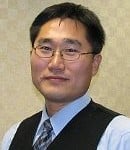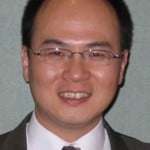Biomedical Engineering Seminar:
Jingkuang Chen, PhD, Principle Engineer, Johnson & Johnson
Thursday, February 12th, 11:00am, Fisher 132
“Capacitive Micro Machined Ultrasonic Transducers and Systems for Imaging and Surgery”
Sponsored by the Department of Biomedical Engineering
Biomedical Engineering Seminar: Smita Rao, PhD
Department of Electrical Engineering, University of Texas Arlington,
Sponsored by the Department of Biomedical Engineering
Thursday, February 5th, 3:00pm, Dillman 320
Title: “Medical Devices and Technology”
Biomedical Engineering Seminar: Friday, January 30th: EERC 100, 3-4pm
D. Curt Deno, Senior Principle Scientist, St. Jude Medical Tech Center
“Applications of Coursework to Industrial Design and Clinical Practice: Biomedical Engineering/Science Applied to Cardiac Rhythm Disorders”
Sponsored by the Department of Biomedical Engineering
The Department of Biomedical Engineering Seminar;
Lidai Wang, Ph.D., Department of Biomedical Engineering, Washington University in St. Louis
Date: Thursday, January 29 – 1:00 pm, Room: 320 Dillman
Title: “Photoacoustic imaging and focusing in deep biological tissue”
Biomedical Engineering seminar Tuesday January 27, 2015, MEEM 111;
Jinjun Xia, Ph.D.,
Title: Molecular/Cellular Photoacoustic Imaging and High Sensitivity
 If seeing is believing, C.K. Choi (Adjunct Assistant Professor, Biomedical Engineering and Assistant Professor, Mechanical Engineering–Engineering Mechanics) has a passion for clarity—in a very tiny world. The assistant professor of mechanical engineering’s research lies at the micro-scale, in channels no thicker than a strand of hair.
If seeing is believing, C.K. Choi (Adjunct Assistant Professor, Biomedical Engineering and Assistant Professor, Mechanical Engineering–Engineering Mechanics) has a passion for clarity—in a very tiny world. The assistant professor of mechanical engineering’s research lies at the micro-scale, in channels no thicker than a strand of hair.
Read more —

Thank you to the participants, the judges and all who helped with another successful BRC Research Forum. A list of BRC award winners is below.
Graduate Grand Prize
Maria Gencoglu (ChE) “A New Virus Purification Process: Virus Flocculation in the Presence of Osmolytes”
Advisor: Caryn Heldt
Graduate Merit Awards
Emily Shearier (Bio Med) “Mesenchymal Stem Cell Spheroids for Therapy Following Axillary Lymph Node Dissection” Advisor: Feng Zhao
Yu Wang (Bio Med) “Building a Virtual Breast Elastography Phantom Lab Using Open Source Software”
Advisor: Jingfeng Jiang
Undergraduate Grand Prize
Caleb Vogt (Bio Med) “Human Mesenchymal Stem Cell Response to Nitric Oxide Relesasing Materials”
Advisors: Megan Frost and Feng Zhao
Undergraduate Merit Award
Mitchell Tahtinen (Bio Med) “Prevascularization of Natural Extracellular Matrix Scaffold”
Advisor: Feng Zhao
Engineers and scientists at Michigan Technological University run into all kinds of roadblocks as they work to move their research from concept to actuality, but exploding rockets aren’t usually one of them.
When Jeremy Goldman took his family to Israel to work on his research on bioabsorbable cardiovascular stents, missiles flying overhead were just one of the facts of war that they had to worry about. Other concerns included terrorists crawling through tunnels, suicide bombers, riots, etc.
Read More
 Biomedical Engineering Graduate Seminar: Wan-Ju Li, Phd, Department of Biomedical Engineering, University of Wisconsin-Madison; Friday, October 17; 3:00 in U113 M&M;
Biomedical Engineering Graduate Seminar: Wan-Ju Li, Phd, Department of Biomedical Engineering, University of Wisconsin-Madison; Friday, October 17; 3:00 in U113 M&M;
Sponsored by: Department of Biomedical Engineering and the Biotechnology Research Center (BRC)
Title: Stem Cell-based Musculoskeletal Tissue Regeneration
